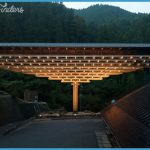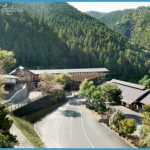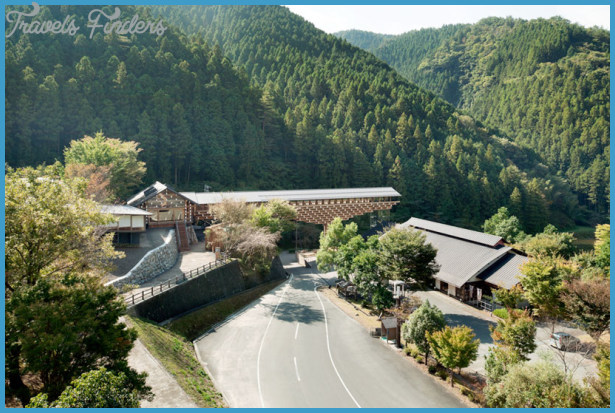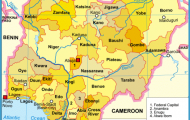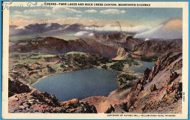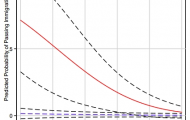KENGO KUMA
Set against a backdrop of tall evergreens, this striking museum is the work of Kengo Kuma. A celebrated Japanese architect, Kuma uses traditional materials to create distinctive contemporary structures that stand in harmony with their environment. Yusuhara, a township in Kochi Prefecture, is in a mountainous area with many trees. Kuma had already designed the Town Hall, using locally produced Japanese cedar wood in the walls, floors, and ceilings, and he chose the same material for the museum. Its intricate structure of wooden beams is based on the cantilevers of traditional Japanese temple roofs, but by extending and multiplying the beams Kuma has created a broad and daring span. This is a museum like no other, apparently held up on a slender wooden pillar, from which beams fan out to support a long, bridgelike building containing a hall and rooms. Similar in form to a tree branching out from its trunk, this unusual building harmonizes with the densely forested hillsides that surround the site.
KENGO KUMA
Born in Kanagawa, Japan, Kengo Kuma studied architecture in Tokyo and later went to Columbia University, New York, as a researcher. In the early 1990s he embraced postmodernism and designed two buildings in Tokyo the Doric and M2 Buildings that pay reference to western classical architecture. Since then, he has adopted many different approaches, including using walls of glass or screens of upright slats to dissolve the edges of buildings and create light, ambiguous spaces. More recently, he has tried to revive some of the flair of traditional Japanese architecture, employing materials such as lumber in buildings that aim for both lightness of touch and sensitivity to site and surroundings.
YUSUHARA WOODEN BRIDGE MUSEUM JAPAN
ON SITE
Fitting the museum into a cramped site that was already home to two substantial civic buildings that were divided by a road presented Kuma with a considerable challenge. His solution was to create a design that linked the existing structures with a bridge, entered from a smaller, pavilionlike building at one end. In this way he was able to create an elevated space above the road and give the site a new cohesiveness.
1 COLUMN AND LIFT SHAFT The museum’s beams are cantilevered out from the central pillar, each layer slightly wider than the one beneath it, so the building can span the space below. The pillar alone would not be able to bear the huge weight of the lumber, so glass and steel lift-shafts at the ends provide additional support. The dark metal frame and clear walls of the shafts minimize their visual impact, revealing the trees beyond and focusing attention on the wooden structure.
1 Aerial view
The museum blends more successfully into its natural surroundings than the other buildings.
IN CONTEXT
The interlocking structural beams of the museum are inspired by traditional Japanese pagodas, such as the one at Horyu-ji Temple (below). Beneath the upturned roofs of these pagodas is a network of connected beams that extends from the building and supports the overhang. Inside, there is a single main wooden post the spine of the pagoda. The central column of the museum, which is exposed to view, acts as its key support in much the same way as a pagoda’s hidden spine.
3 BEAMS A close-up of the cantilevered beams shows the meticulous treatment of the timber, which has been carefully selected to display the beautiful grain of the wood and create a satisfying pattern of light and dark shades. Rather than placing one beam directly on top of the other, each is fixed into a shallow groove cut into the beam on which it rests, so that all the components are firmly locked together.
3 INTERIOR Inside, the museum is clad with planks and beams that match the exterior beams. The long central corridor has smooth, polished wooden floors and walls with pitched roof timbers, whose repeated diagonals create visual interest. Rows of glass doors lead off the corridor to the rooms on either side, flooding the interior with light and making the walls appear transparent. They also open up inviting views through the building to the surrounding countryside.
1 HoryO-ji Temple, Ikaruga, Japan
The wooden structure of this famous pagoda was originally built in the 6th century.

